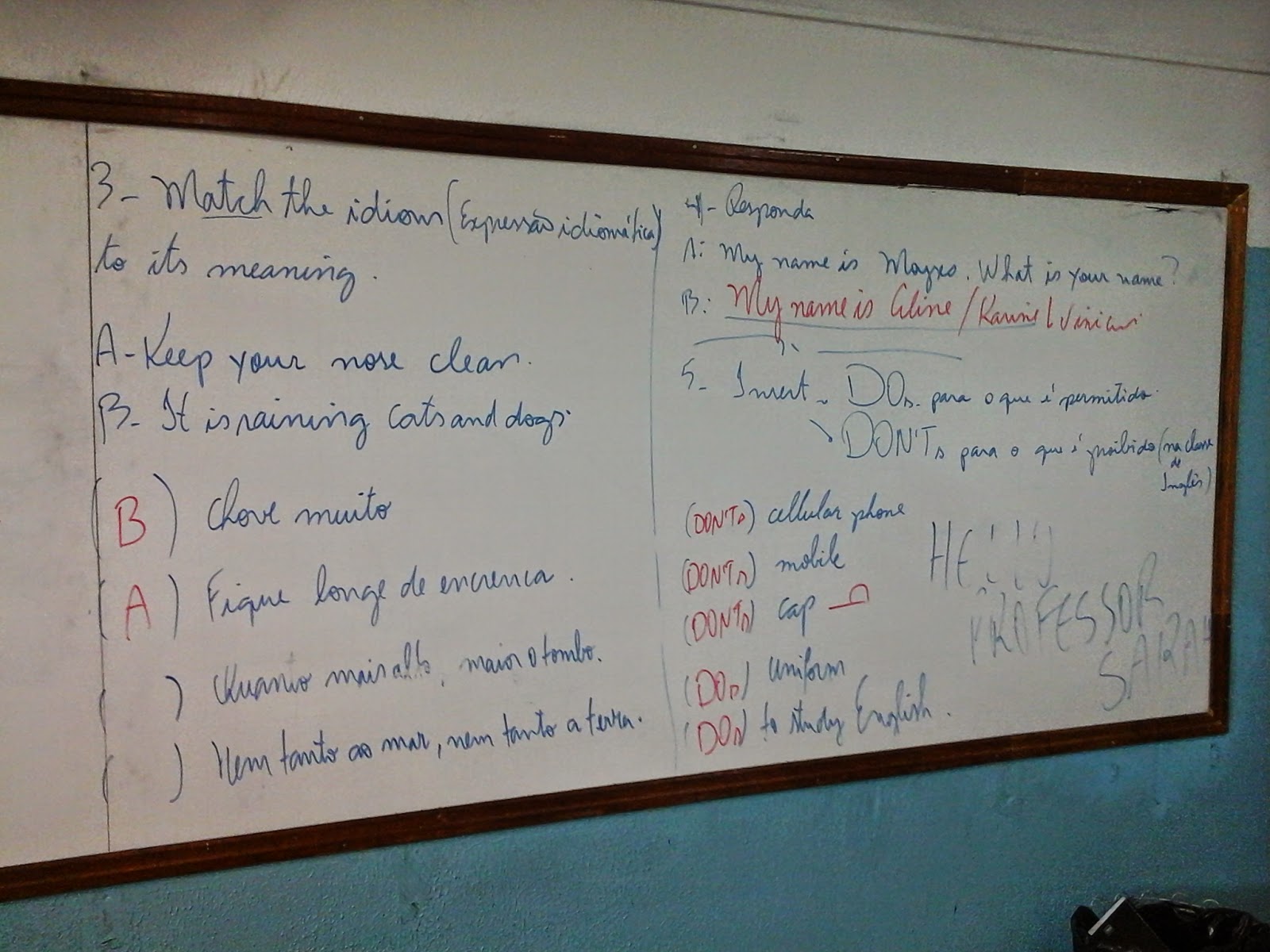Carina Carvalho da Silva has incorporated a word wall into her classroom to give students a reminder of key words and phrases they learn during a class.
She also used the 8-flap foldable we made in class to practice asking and answering introductory questions with her students. Her students used these foldables to interview different people at school.
Anderson Galdino Vigneron also used the 8-flap foldable with his class!
However, the fun didn't stop there. Anderson also used St. Patrick's Day to teach English both grammatically and culturally. His students got festive with the many St. Patrick's Day decorations that Anderson brought back from the United States. He also challenged them to present on Saint Patrick and the significance of St. Patrick's Day both in the United States and Ireland.
Cristiane Santos also used the St. Patrick's Day celebration to teach her students. As she teaches younger students with lower reading and writing abilities, she was able to use the cultural aspect of St. Patrick's Day to motivate her students during class. At the end of class, her students used shamrock shaped exit cards to say a little bit about themselves and their thoughts in Portuguese.
Moyses Brahim Neto created a formal assessment from his unit plan that tested students on their ability to introduce themselves, fill out a form, list school rules, and identify idioms.
Neusa Cherutti Galindo used the jigsaw method we learned in class to have her students break down a text and present smaller parts of it to one another.
Her students also made adorable mini-books to showcase their use of English.
Roberta Rosetti says she uses different foldables almost every day in her literature class, and the students love them.
Even her students got to take part in the St. Patrick's Day fun with some English word searches to practice their new vocabulary.
The Brazilian teachers are doing incredible work at their schools in Brazil. They have incorporated aspects of everything they learned at Notre Dame into their teaching, and we can't wait to see what else they show us in the months to come!








































